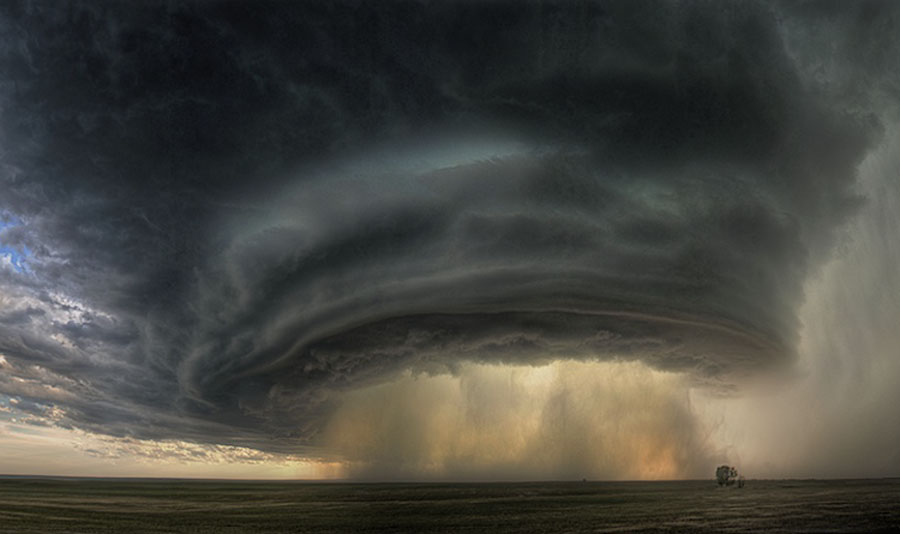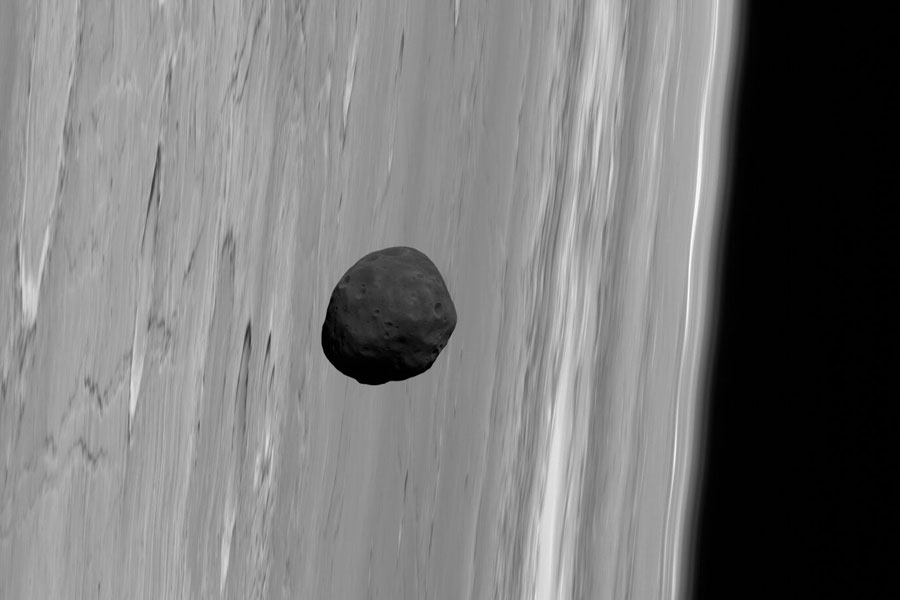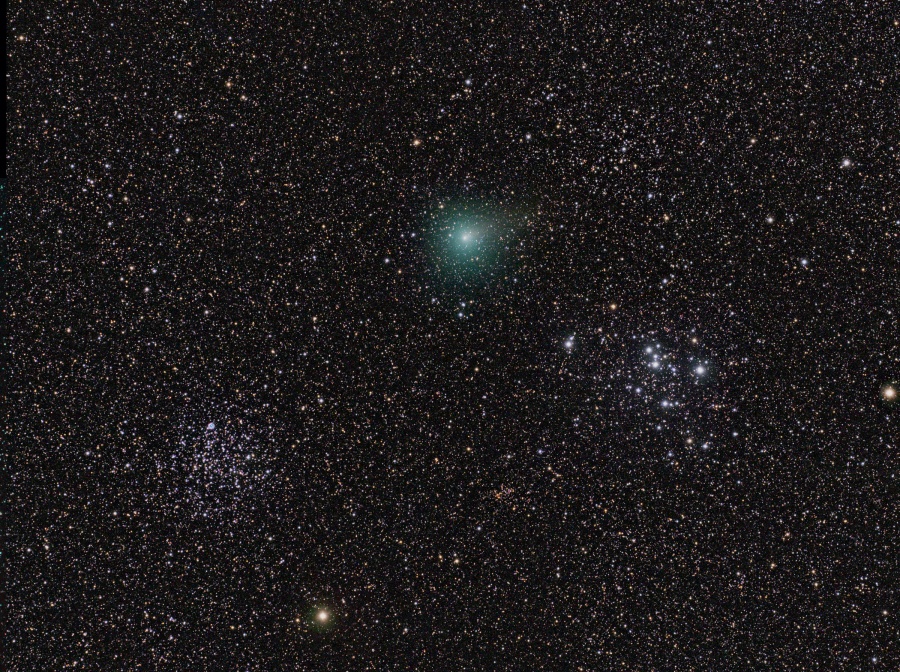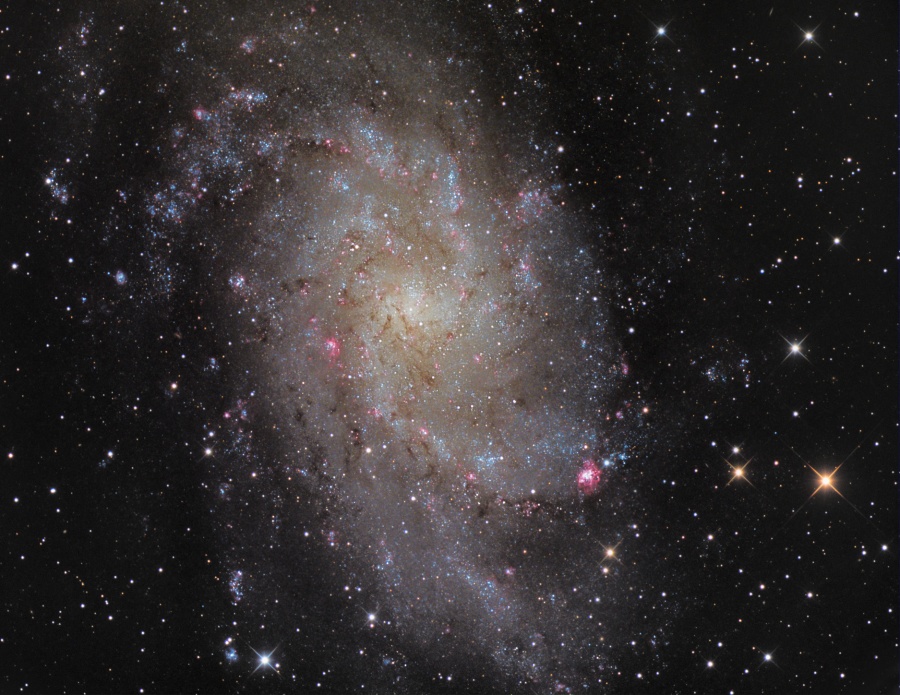________________________________________________________________
Please vote for the TWO best Astronomy Pictures of the Day (image and text) of November 28-December 4.
(Repeated APODs are not included in the poll.)
All titles are clickable and link to the original APOD page.
We ask for your help in choosing an APOW, as this helps Jerry and Robert create "year in APOD images" review lectures, creates APOM polls that can be used to create a free PDF calendar at year's end, and provides feedback on which images and APODs were relatively well received. You can select two top images for the week.
Please do not vote repeatedly to boost the votes on a particular image; doing so invalidates the poll results.
Thank you!
________________________________________________________________
<- Previous week's poll
Why are planet-circling clouds disappearing and reappearing on Jupiter? Although the ultimate cause remains unknown, planetary meteorologists are beginning to better understand what is happening. Earlier this year, unexpectedly, Jupiter's dark Southern Equatorial Belt (SEB) disappeared. The changes were first noted by amateurs dedicated to watching Jupiter full time. The South Equatorial Band has been seen to change colors before, although the change has never been recorded in such detail. Detailed professional observations revealed that high-flying light-colored ammonia-based clouds formed over the planet-circling dark belt. Now those light clouds are dissipating, again unveiling the lower dark clouds. Pictured above two weeks ago, far infrared images -- depicted in false-color red -- show a powerful storm system active above the returning dark belt. Continued observations of Jupiter's current cloud opera, and our understanding of it, is sure to continue.
Is that a spaceship or a cloud? Although it may seem like an alien mothership, it's actually a impressive thunderstorm cloud called a supercell. Such colossal storm systems center on mesocyclones -- rotating updrafts that can span several kilometers and deliver torrential rain and high winds including tornadoes. Jagged sculptured clouds adorn the supercell's edge, while wind swept dust and rain dominate the center. A tree waits patiently in the foreground. The above supercell cloud was photographed in July west of Glasgow, Montana, USA, caused minor damage, and lasted several hours before moving on.
Why is Phobos so dark? Phobos, the largest and innermost of two Martian moons, is the darkest moon in the entire Solar System. Its unusual orbit and color indicate that it may be a captured asteroid composed of a mixture of ice and dark rock. The above picture of Phobos near the limb of Mars was captured last month by the robot spacecraft Mars Express currently orbiting Mars. Phobos is a heavily cratered and barren moon, with its largest crater located on the far side. From images like this, Phobos has been determined to be covered by perhaps a meter of loose dust. Phobos orbits so close to Mars that from some places it would appear to rise and set twice a day, but from other places it would not be visible at all. Phobos' orbit around Mars is continually decaying -- it will likely break up with pieces crashing to the Martian surface in about 50 million years.
Early in November, small but active Comet Hartley 2 (103/P Hartley) became the fifth comet imaged close-up by a spacecraft from planet Earth. Continuing its own tour of the solar system with a 6 year orbital period, Hartley 2 is now appearing in the nautical constellation Puppis. Still a target for binoculars or small telescopes from dark sky locations, the comet is captured in this composite image from November 27, sharing the rich 2.5 degree wide field of view with some star clusters well known to earthbound skygazers. Below and right of the comet's alluring green coma lies bright M47, a young open star cluster some 80 milion years old, about 1,600 light-years away. Below and left open cluster M46 is older, around 300 million years of age, and 5,400 light-years distant. Hartley 2's short, faint tail even extends up and right toward another fainter star cluster in the scene, NGC 2423. On November 27, Comet Hartley 2 was about 2.25 light-minutes from Earth. Sweeping toward the bottom of this field, by November 28 the comet's path had carried it between M46 and M47.
The small, northern constellation Triangulum harbors this magnificent face-on spiral galaxy, M33. Its popular names include the Pinwheel Galaxy or just the Triangulum Galaxy. M33 is over 50,000 light-years in diameter, third largest in the Local Group of galaxies after the Andromeda Galaxy (M31), and our own Milky Way. About 3 million light-years from the Milky Way, M33 is itself thought to be a satellite of the Andromeda Galaxy and astronomers in these two galaxies would likely have spectacular views of each other's grand spiral star systems. As for the view from planet Earth, this sharp, detailed image nicely shows off M33's blue star clusters and pinkish star forming regions that trace the galaxy's loosely wound spiral arms. In fact, the cavernous NGC 604 is the brightest star forming region, seen here at about the 4 o'clock position from the galaxy center. Like M31, M33's population of well-measured variable stars have helped make this nearby spiral a cosmic yardstick for establishing the distance scale of the Universe.
In dwindling twilight at an August day's end, these broad dark bands appeared in the sky for a moment, seen from Robert Smithson's Spiral Jetty on the eastern shore of Utah's Great Salt Lake. Outlined by rays of sunlight known as crepuscular rays, they are actually shadows cast by clouds near the distant western horizon, the setting Sun having disappeared from direct view behind them. The cloud shadows are parallel, but seem to converge in the distance because of perspective. Coiled in the salt-encrusted lake surface, Smithson's most famous earthwork provides a dramatic contrast to the converging lines. The Spiral Jetty was constructed in 1970, when the water level was unusually low and was completely submerged in a few years as the level rose. Now just above water again, it has spent much of its existence submerged in the briny lake.
<- Previous week's poll
Poll: Astronomy Picture of the Week for Nov 28 - Dec 4
Poll: Astronomy Picture of the Week for Nov 28 - Dec 4
A closed mouth gathers no foot.
Poll: Astronomy Picture of the Week for Nov 28 - Dec 4
A fine selection of pictures, as always. I voted for Phobos from Mars Express and Hartley 2 Star Cluster Tour pictures. Supercell Thunderstorm picture looks superb, but it is related with astronomy a bit more loosely.
Not too much people have voted in the poll, by the way.
Not too much people have voted in the poll, by the way.
Re: Poll: Astronomy Picture of the Week for Nov 28 - Dec 4
This poll didn't have a link to it from APOD, as most others do. I suspect the results would not be much (or any) different if it had; generally, really stupendous earth images (usually of things that look scary!) do very well in the polls.
A closed mouth gathers no foot.





